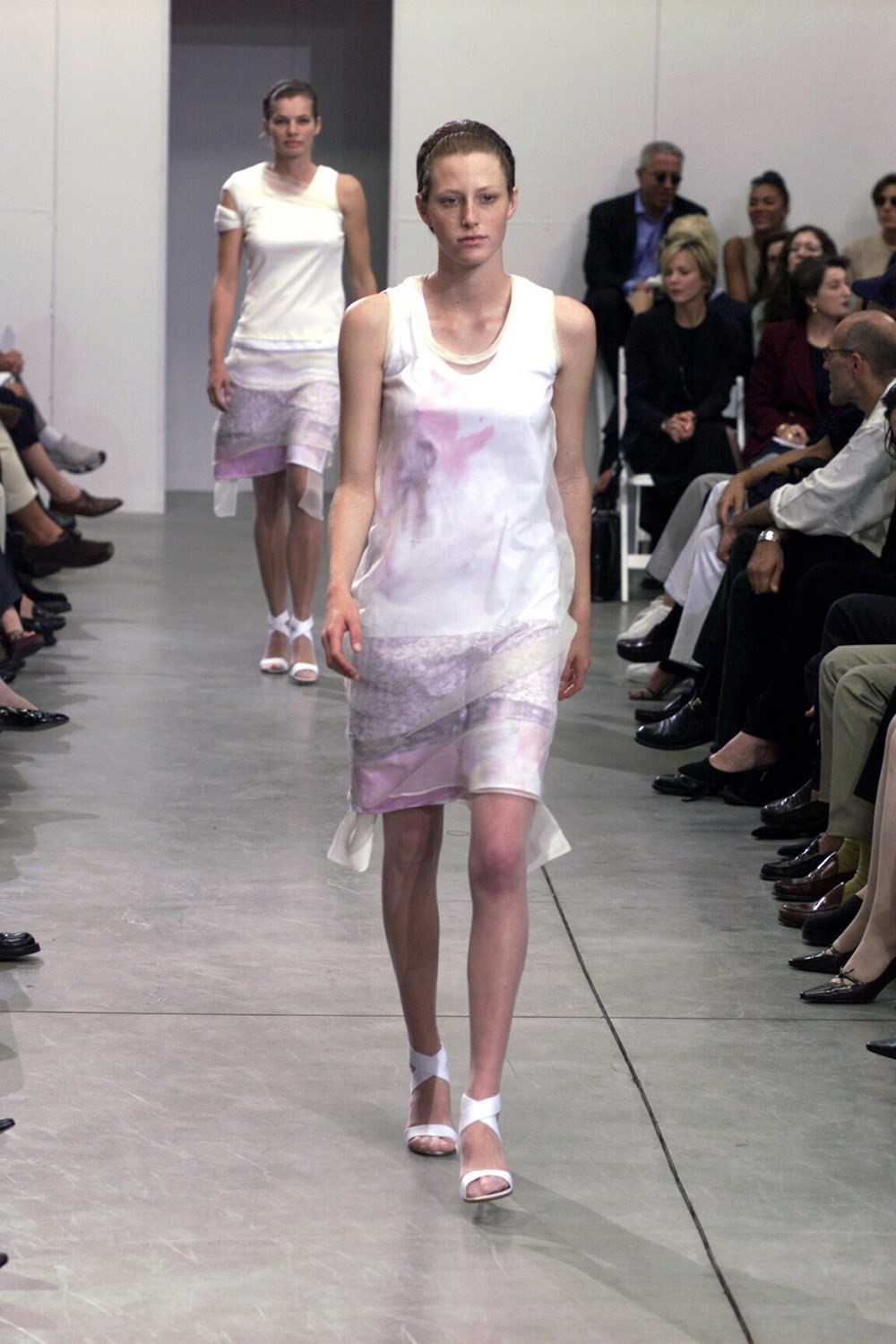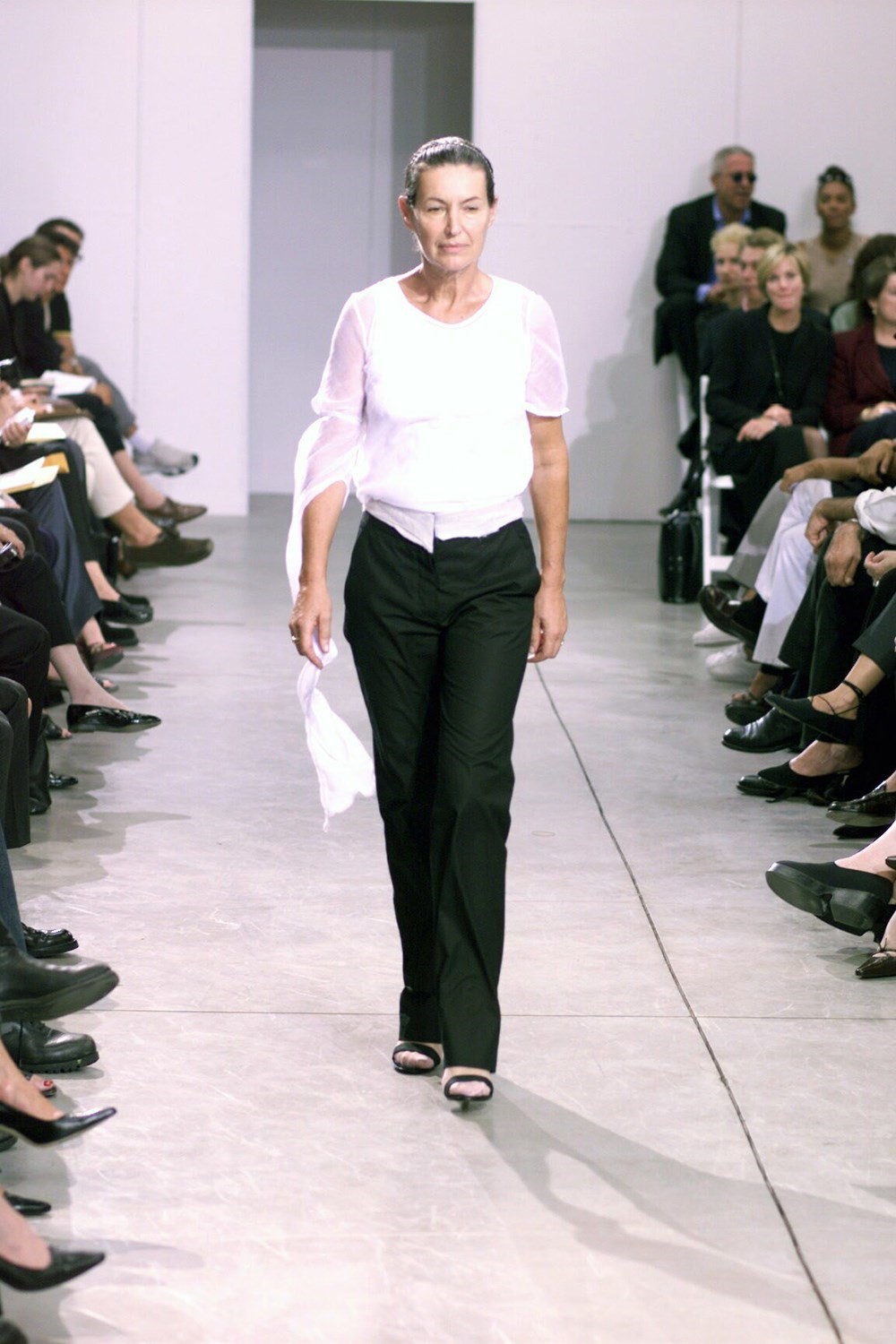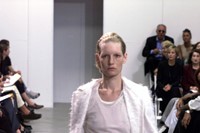Helmut Lang’s vocabulary of clean-cut flat-fronted tailoring, layered cotton tanks and sheer tees, utility-luxe parkas, and techno-fabric flou dresses that were bold and grown-up (rather than fragile and grungy) can really only be described as cool. Lang was undisputedly the king of cool – everything about his brand captured the zeitgeist and emitted an attitude that was a countercurrent to mainstream style, from the speedy and unconventional line-up of artists, models and friends that walked his warehouse shows to the cryptic ad campaigns that featured archival images from Robert Mapplethorpe’s estate and the intentionally distressed styles that customers wouldn’t dare take an iron to. “Lang performed the rites of passage into adulthood for all those who had grown up as punks and ravers, people who’d slouched through their youth wearing nothing but T-shirts, jeans, parkas, and sneakers as their tribal badges of honor,” wrote Sarah Mower earlier this year. “Before Helmut, fashion had nothing for this anti-fashion youth-pack to put on. They didn’t even want it. But by the mid-90s, this was the crowd that was rising to power in the creative classes: artists, actors, stylists, photographers, movie-makers, editors, graphic designers, entrepreneurs – people in their 20s and 30s who were going out and killing it in business for the first time in their lives.”
For a man so careful to not be the centre of attention that he didn’t even show up to the 2000 CFDA awards, in which he was nominated for three major categories, by the turn of the millennium, Lang had conquered New York just two years after moving there. Over a thousand yellow cabs convoluted Manhattan streets with HELMUT LANG boldly lettered across their roofs, without even a picture needed to convey the brand’s appeal. Such branding was what made Lang the archetypal minimalist – everything was so stripped to the core that it attracted people rather than chased them. Even when Lang decided to launch his first fragrance in 2000, he did so on the Internet, making the launch about the brand, and the inherent loyalty of its followers, rather than the product itself. What made Lang’s influence all the more pervasive was that the Austria-born designer had no desire to be nostalgic in either aesthetic or business practice. Lang eagerly anticipated the millennium and challenged the sacrosanct fashion system by first showing his A/W98 collection on a CD-ROM and the Internet, later reasoning that it allowed his customer “an unfiltered view” of his work, before staging his S/S98 collection in advance of the European shows and triggering a frenzy of reshuffling that gave birth to the fashion calendar as we know it today.
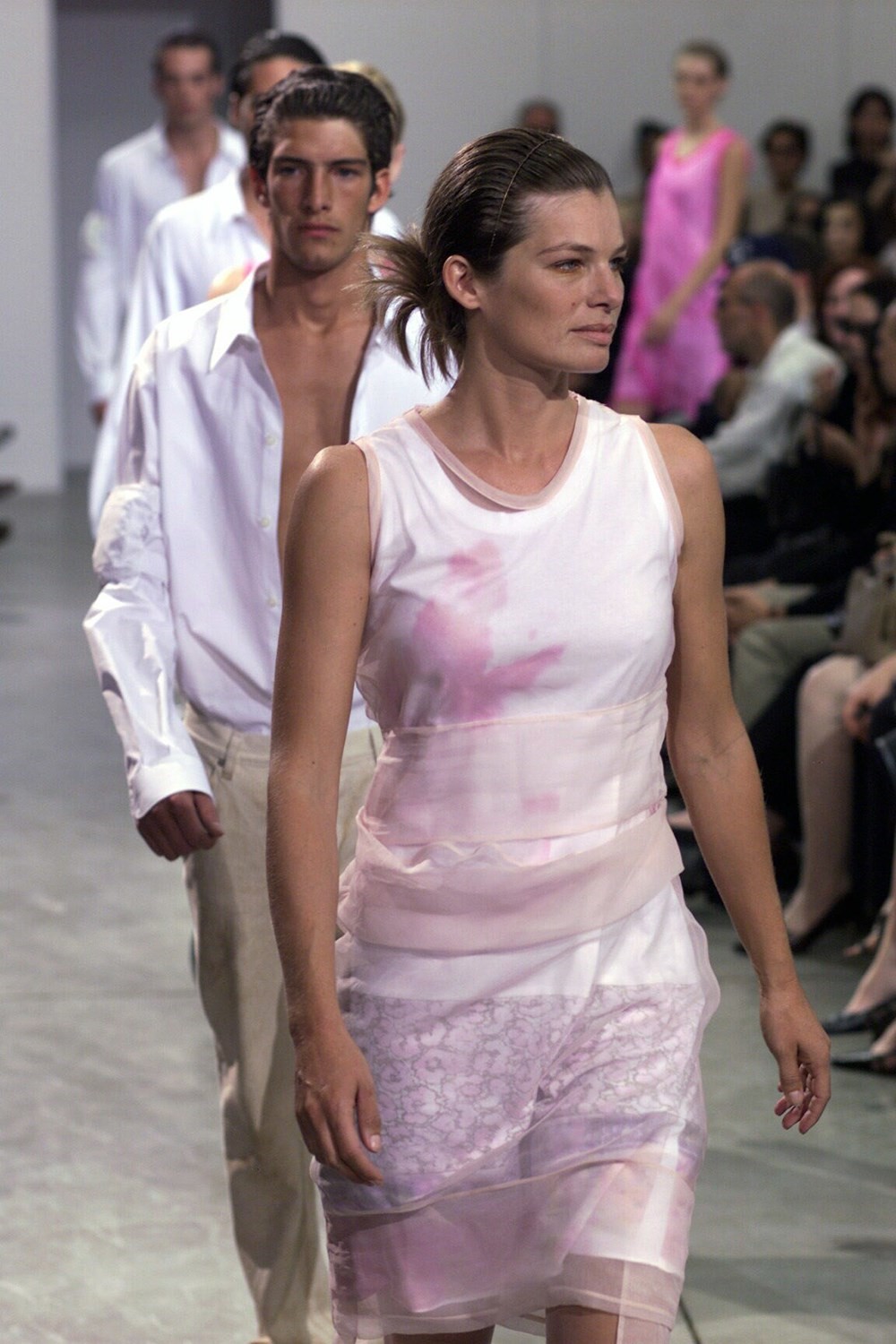
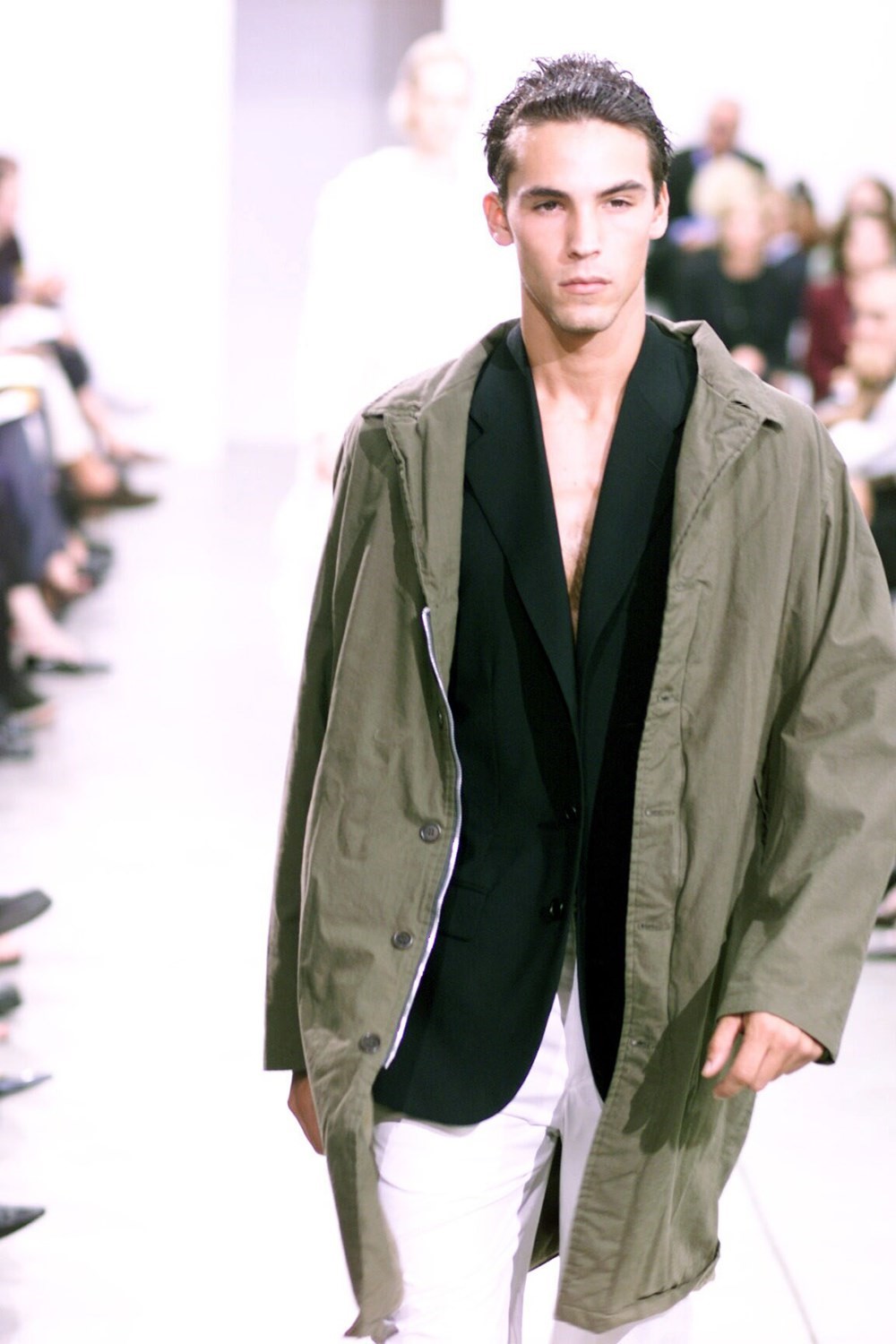
The Show
Simon Doonan once said that Helmut Lang “casts his shows like a Fassbinder movie”. Often they were a mix of Lang’s friends from Vienna, such as 50-something photographer Elfie Semotan, and the male and female models that epitomise the the clean minimalism of the 1990s, such as Kirsten Owen, Stella Tennant, Amber Valetta, Cecilia Chancellor and Jeny Howorth. When Kate Moss was the model of the moment, Lang made a point of using her for only one look in the show – something that he maintained for even the older supermodels such as Christy Turlington, Naomi Campbell and Linda Evangelista. The S/S99 show saw a continuation of Lang’s sartorial codes: the all-important black flat-fronted tailoring and precise Crombie coats, ruched cotton tanks layered onto dresses and skirts, leather trousers with motorbike jacket ribbed panels, and a whole section of the show dedicated to acid-house pink organza. As Mower noted, these are clothes that lend an air of polish to otherwise underground references. “You could pass in the straight corporate world while secretly laughing. Who knew that Lang was surreptitiously encoding the imagery of bondage harnesses, trash-bags, bra straps, and rubber into those clothes? Who recognized the sly flashes of acid-house pink? They didn’t. We did.” Amber Valetta and Kirsten Owen closed the show in a white tank, tailored black trousers with a fan of trimmed albino peacock feathers at the back: the kind of subdued theatricality that Lang could pull off effortlessly.
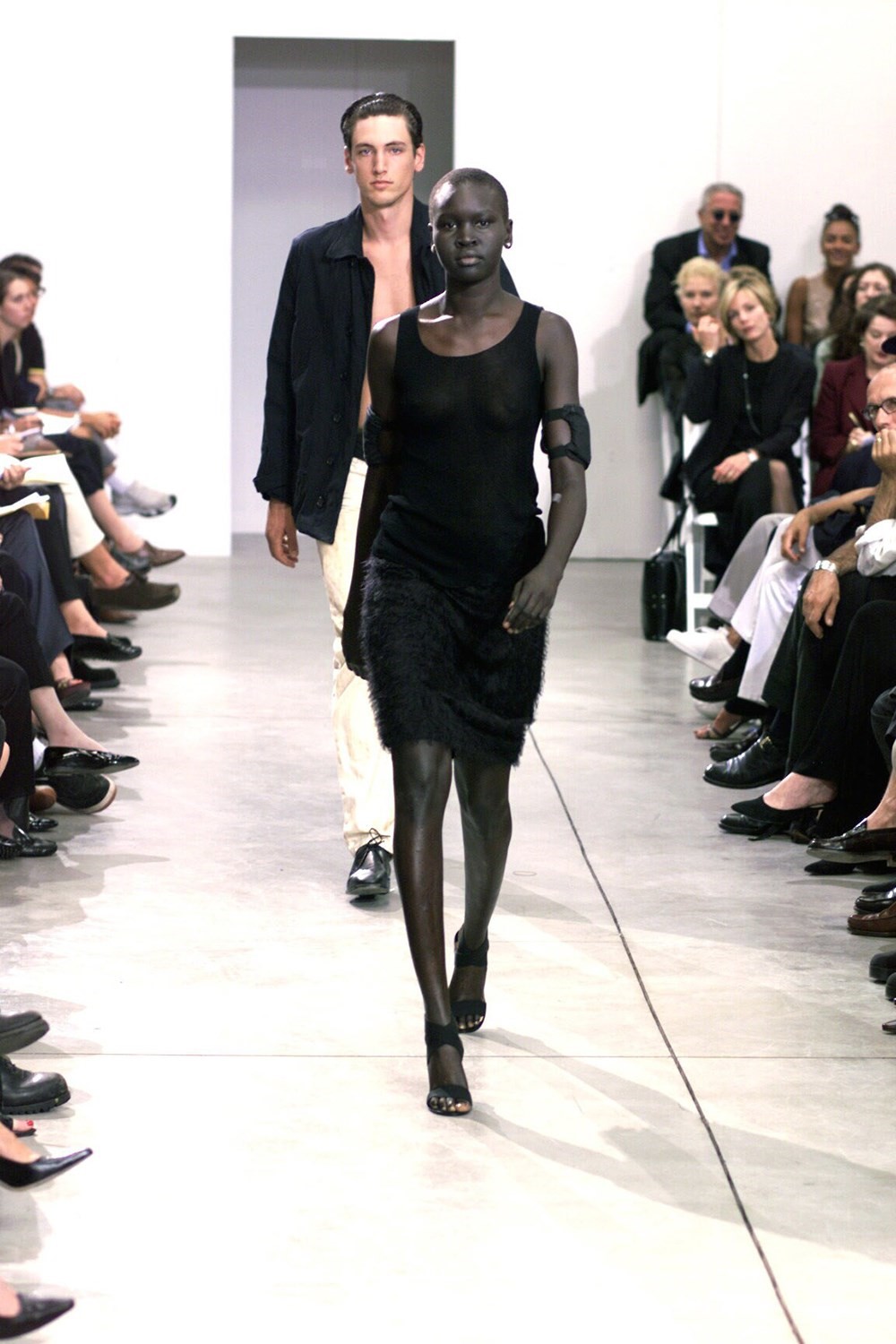
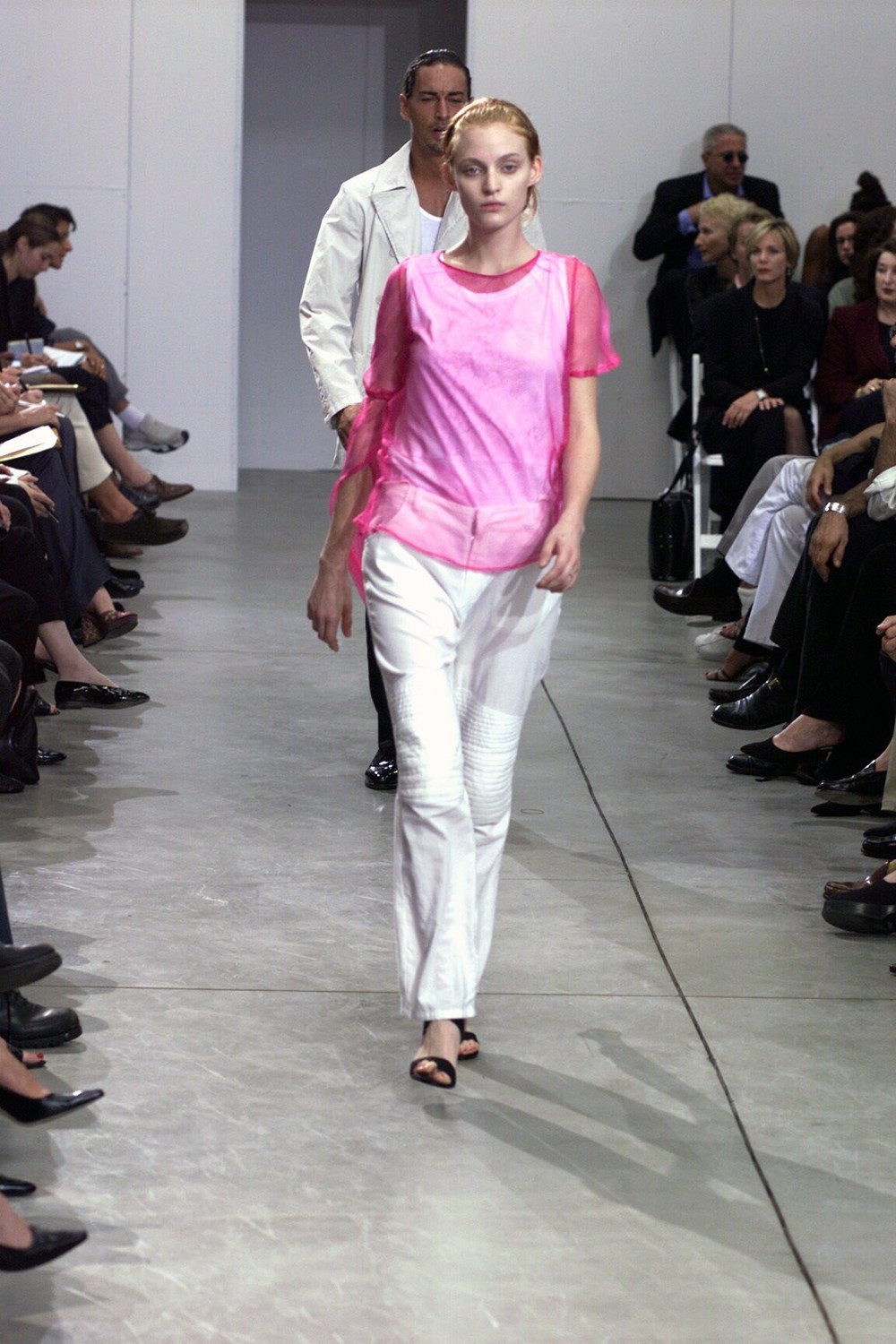
The People
In 2000, Vogue’s Sally Singer recalled Lang’s shoebox Milan boutique brimmed with elbowing editors during the Italian collections, each eager to get their hands on new-season suits and coats before crossing the street to Prada. It was the assimilation of the two that inevitably resulted in Patrizio Bertelli, head of Prada and husband of Miuccia, buying a majority stake in Helmut Lang in 1999. “After I moved to New York, I had to make the decision to go to the next important level,” Lang told Singer. “I always wanted a partner to take care of the business side – my soul was not attached to it. Merging with Prada was an acknowledgment that they know how to do it and on which level of quality it has to be performed.” The result was a global expansion that saw stores designed by Richard Gluckman being erected in London, Los Angeles, New York’s SoHo, Paris, and various cities in the Far East. Lang was adamant that he was able to maintain control of his marketing strategy, which included placing his Anthony Turner-lensed still life ads of piles of feathery shoes and bags in National Geographic, a magazine that he likened to “the printed equivalent of the Internet … All different kinds of people read it, plus nobody throws it out.”
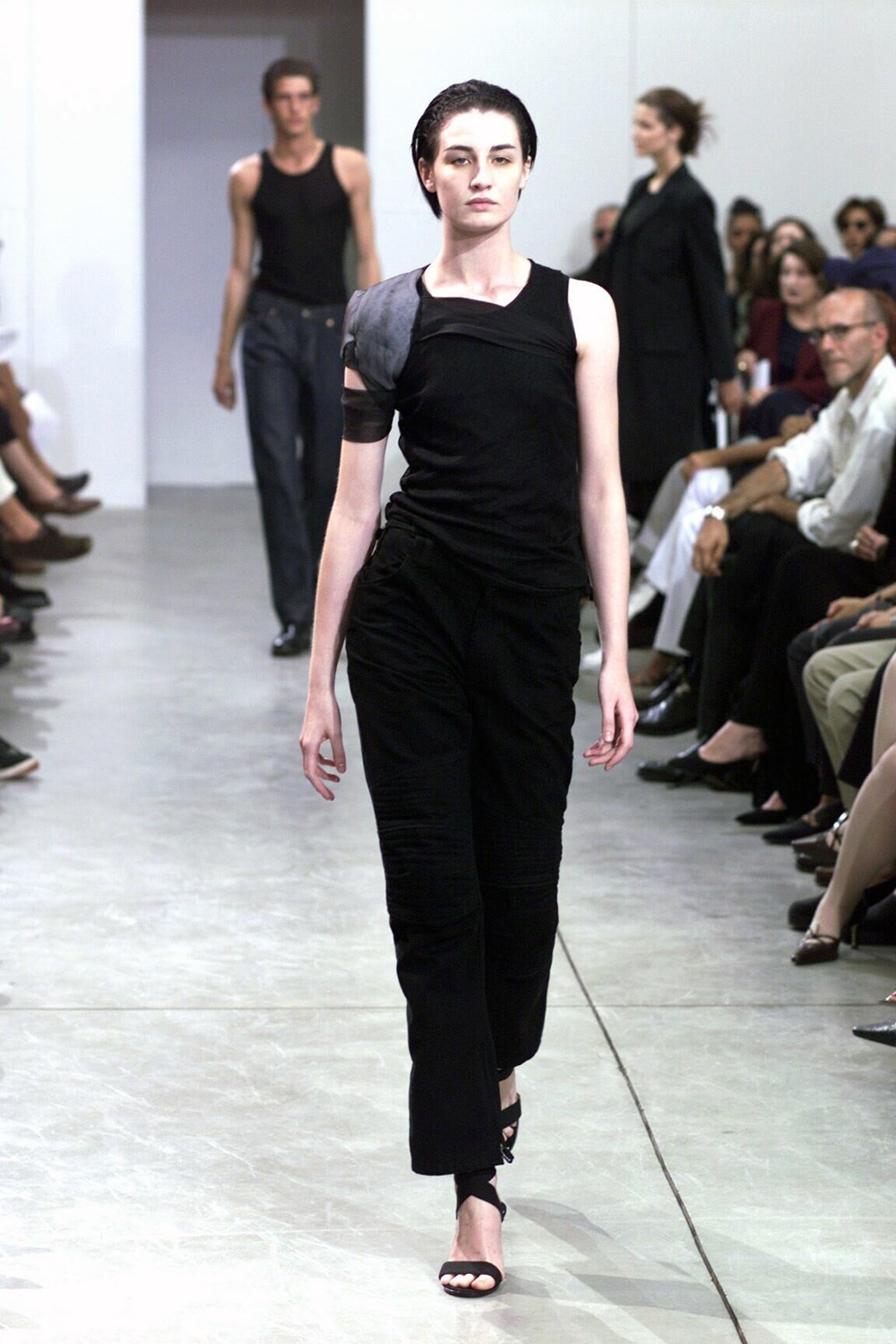
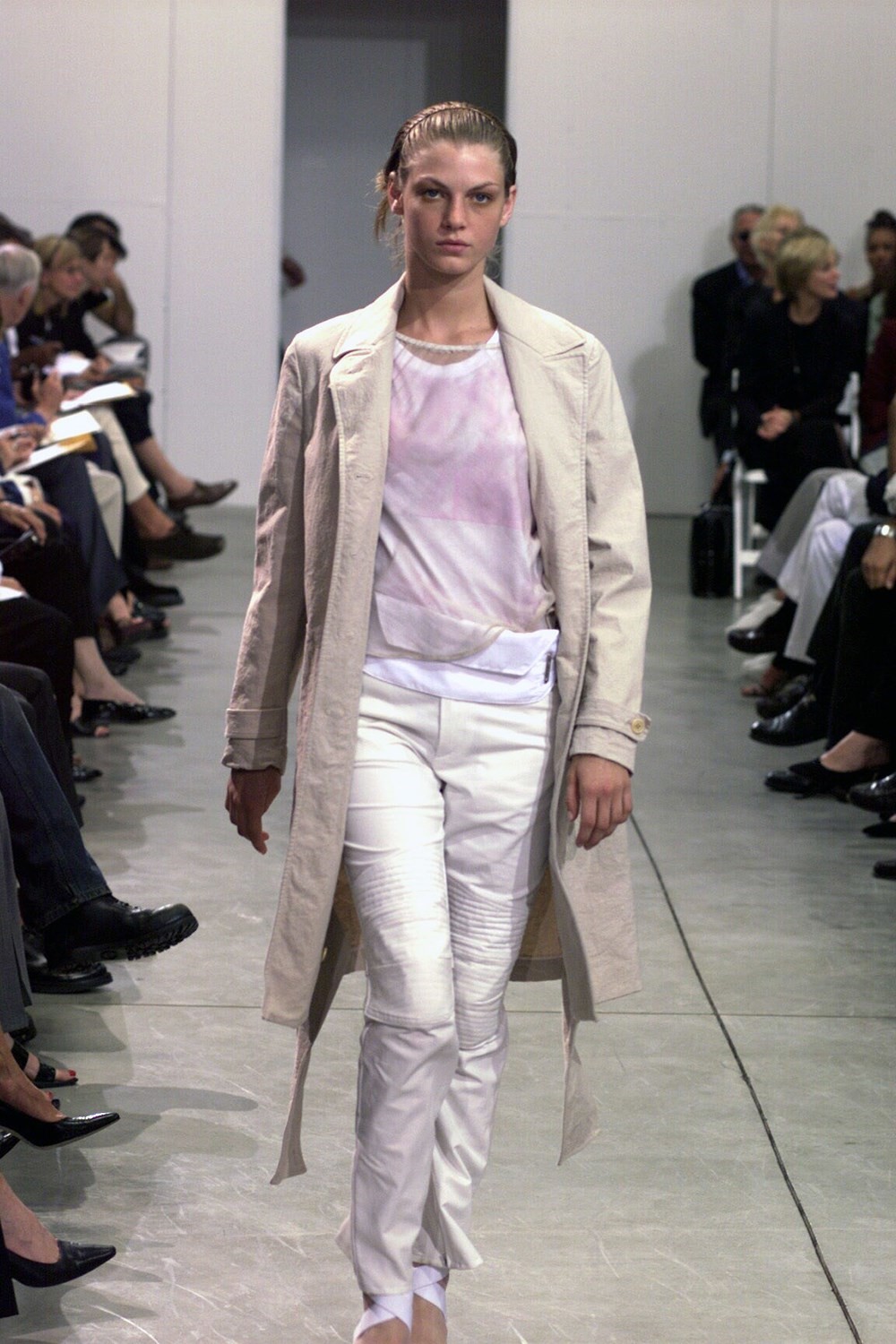
The Impact
Much can be made of Helmut Lang’s impact, which can be felt in the work of countless designers to come after him. Cathy Horyn has noted that without Helmut Lang, there would be no Raf Simons, and subsequently no Hedi Slimane. His collaborations with artists such as Jenny Holzer and Louise Bourgeois ushered in a marriage of art and fashion, and his early embrace of the Internet and ability to shake up the system was far ahead of the curve. He was also one of the first designers to present menswear and womenswear together in his minimal and unconventional formats. “His was the only show that mixed up the generations,” Stella Tennant recently told Vogue.com. “He always wanted the show super fast. It was fine to overtake someone if she was dawdling in front of you.”
When Lang began showing in the mid-80s, he was sending scrubbed-clean waifs shuffling down runways to symphonies by Strauss in strict silhouettes and sombre colours, punctuated only by the occasional folkloric detail of a horn button or lederhosen stitching. Critics were horrified at the fact that this designer as sending variations of T-shirts down the runway – something that has since become a defining characteristic of contemporary fashion design (it’s fair to say Vetements owes just as much to Lang as it does to Margiela). The designer left his label in 2004, without a word, to live privately in East Hampton and fulfil his artistic interests, which perhaps is the most impactful legacy he left behind, especially considering fashion’s recent mass exodus of creative directors. His decision indicated integrity, bringing to mind Coco Chanel’s famous three words: elegance is refusal. “Perhaps Lang’s clothes were too intellectual [in the 80s],” said the late Maria Luisa Poumaillou, the woman behind the legendary eponymous boutique in Paris, in 1995. “They’ve always been simple and easy to wear, but the fact that they never looked expensive threw them out of sync with the ostentation of the 80s. You can’t sense the value in them until you actually put them on. And that is a very 90s concept.”
